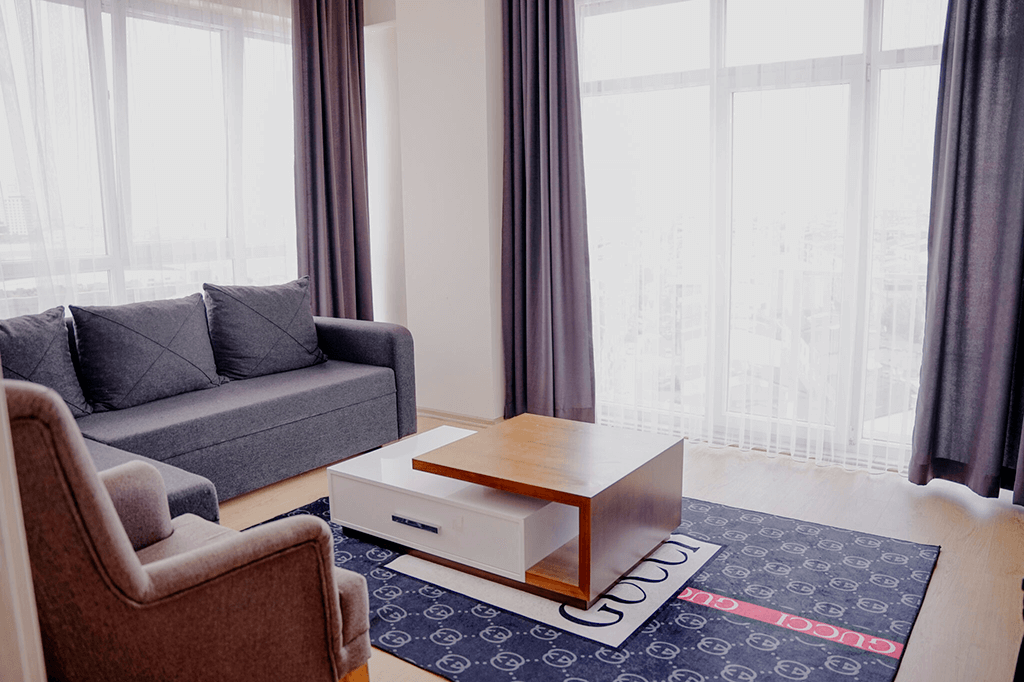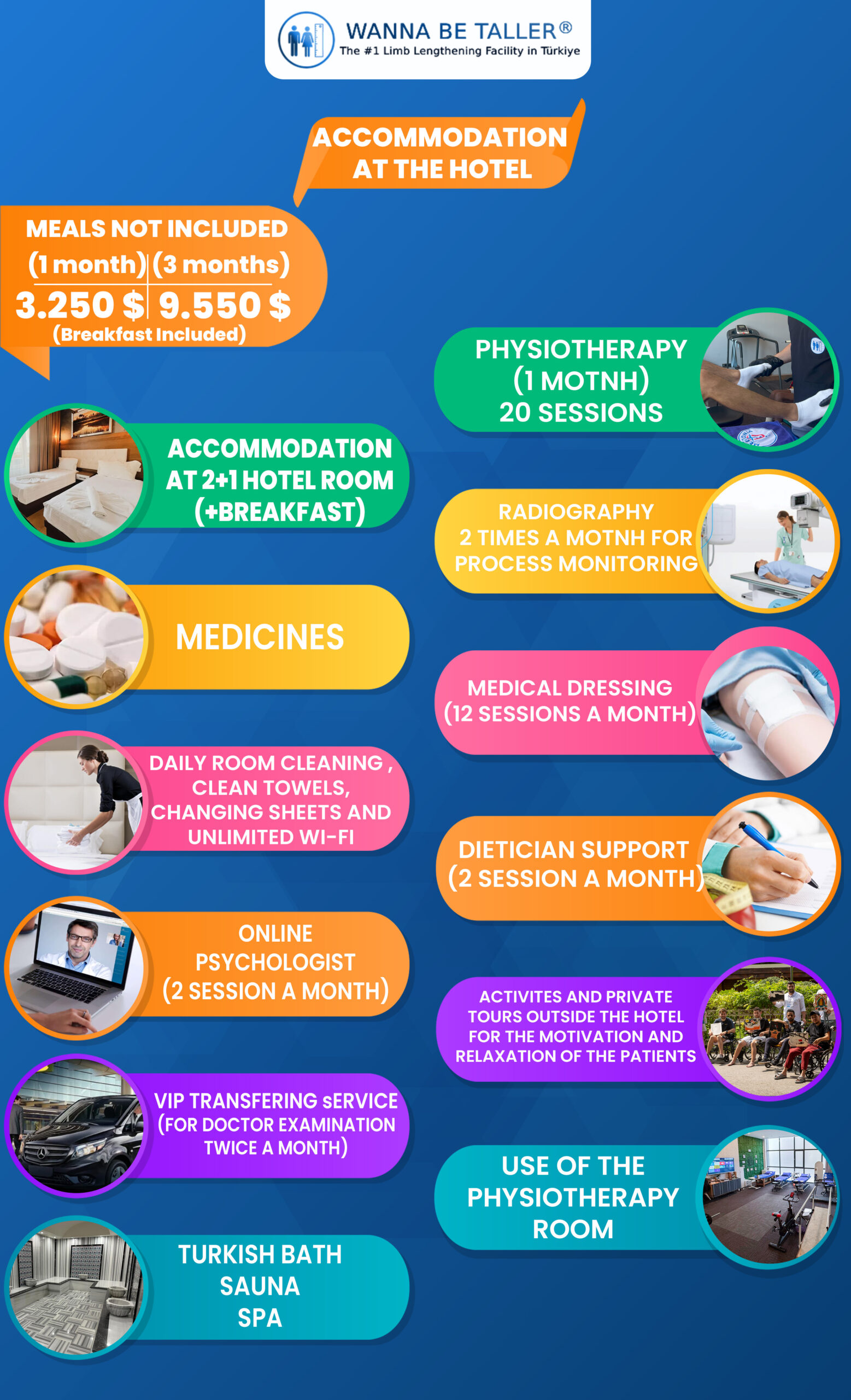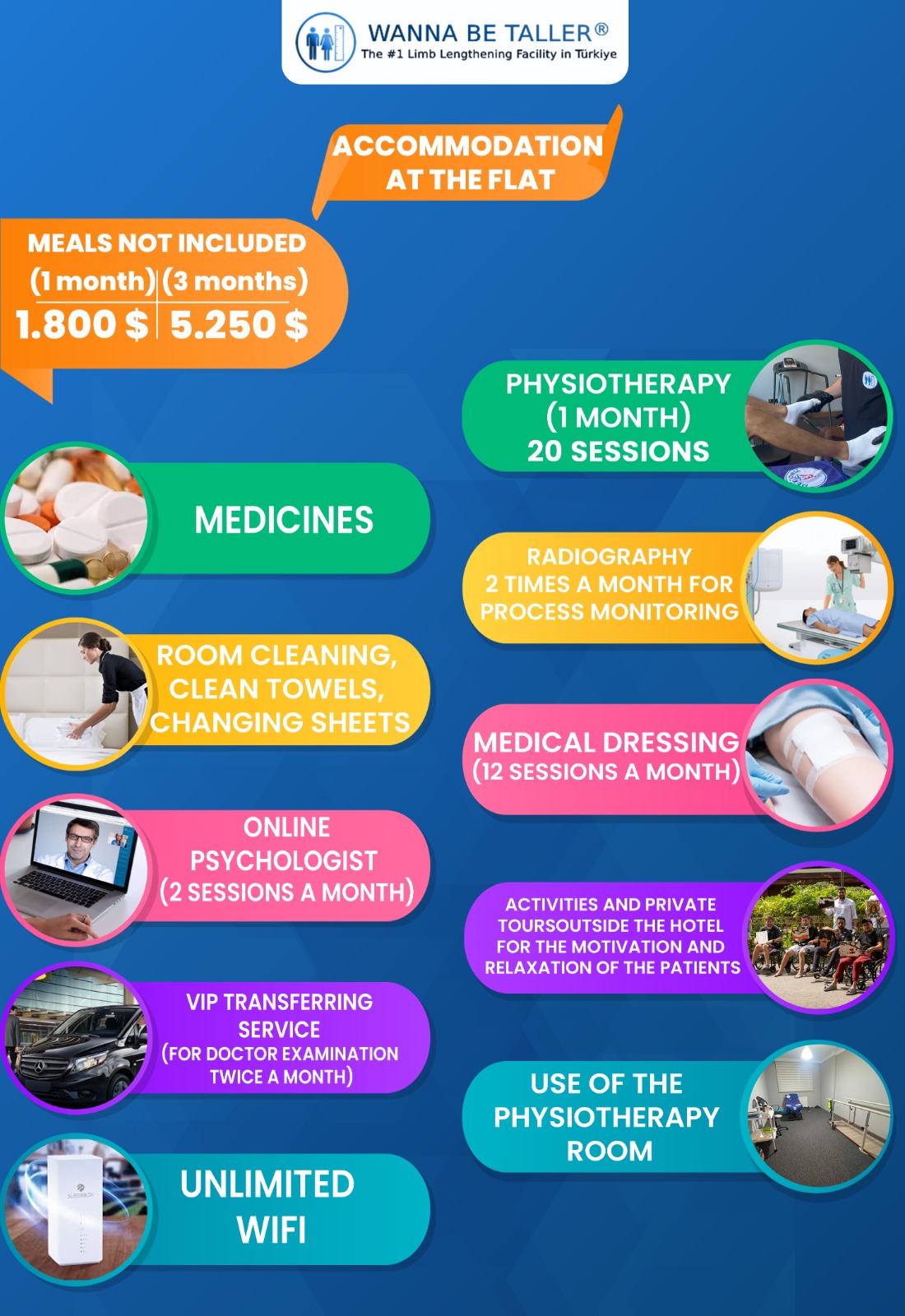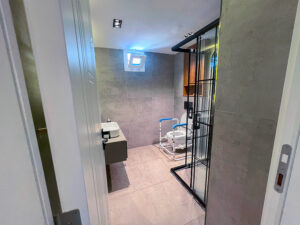Height reduction surgery—also referred to as limb shortening—provides an option for those looking to modify their overall height for personal or cosmetic reasons or to address significant discrepancies in leg length in certain cases. With an average hospital stay of only a few days, followed by several months of rehabilitation and physical therapy, the process requires thorough planning, realistic expectations, and a commitment to proper aftercare. In this guide, every phase of height reduction surgery is examined in detail—from preoperative considerations and surgical methods to postoperative recovery and potential risks—ensuring you have all the necessary information to make an informed decision.
WHAT IS HEIGHT REDUCTION SURGERY?
Height reduction surgery is a specialized orthopedic procedure intended to decrease the length of one or both legs by surgically removing a small section of bone. By precisely cutting and stabilizing the bone using internal devices such as rods or metal plates, the procedure can enhance overall body balance and potentially relieve both physical and psychological burdens.
After the patient is placed under general or regional anesthesia, the surgeon makes a small incision to expose the bone and performs an osteotomy—carefully cutting the bone at a predetermined location. A small segment of bone is then excised to achieve the desired shortening, after which the two cut ends are brought together. To secure the shortened bone, the surgeon employs either an intramedullary rod inserted into the bone canal or a metal plate with screws attached to the outer surface; both techniques are designed to maintain proper alignment during healing and are usually removed after approximately one year. The incision is then closed, and the patient’s initial recovery may involve a few days of hospital observation for pain management and to prevent complications such as infection. Early physical therapy is typically initiated to preserve muscle strength and joint mobility, ensuring that, with appropriate care and follow-up, the shortened leg heals in a stable and functional manner.

THE HISTORY OF HEIGHT REDUCTION SURGERY
Height reduction surgery originates from the same orthopedic foundations that led to limb lengthening and deformity correction methods, dating back to the late 19th and early 20th centuries. Early innovators like Alessandro Codivilla initially concentrated on lengthening procedures to correct congenital or post-traumatic limb inequalities, but physicians soon recognized that shortening an overly long limb could also restore balance and function. During the mid-20th century, particularly through the groundbreaking work of Dr. Gavriil Ilizarov in the Soviet Union, external fixation devices were refined to allow for more precise bone manipulation. Although Ilizarov’s research primarily popularized lengthening, his techniques and principles of distraction osteogenesis also paved the way for improved bone healing in shortening procedures. Over time, advances in implant technology, anesthesia, and sterilization methods further broadened the options for orthopedic surgeons, with intramedullary rods and specialized metal plates transforming a once highly invasive operation into a more controlled and relatively safer intervention. While cosmetic height reduction is less common than limb lengthening, increasing global mobility and heightened patient awareness in recent decades have renewed interest in limb shortening for both medical and personal reasons. Consequently, the history of height reduction surgery is intertwined with the broader evolution of orthopedic innovation, reflecting ongoing efforts to refine surgical tools, optimize recovery, and ultimately enhance patients’ quality of life.
HOW IS HEIGHT REDUCTION SURGERY PERFORMED?
Height reduction surgery is a specialized orthopedic procedure aimed at shortening the legs by excising a segment of bone from either the femur or tibia. Intended to correct significant leg-length discrepancies or, in some cases, to achieve a lower overall stature, this procedure requires a precise surgical technique, comprehensive preparation, and careful post-operative care. Below is an overview of the primary surgical methods, required evaluations, and the recovery process—including the essential role of physiotherapy in achieving optimal outcomes.
Methods/Techniques:
Height reduction surgery typically involves removing a predetermined segment of bone—most commonly from the femur or tibia—to achieve the desired reduction in leg length. After making a small incision, the surgeon performs an osteotomy by carefully cutting the bone at the calculated point and then removes the excess portion. To stabilize the newly shortened bone, intramedullary rods (inserted into the bone canal) or metal plates with screws (affixed to the bone’s outer surface) are used; both methods are designed to maintain proper alignment during healing and are usually removed about a year later.
Evaluations and Examinations Before Surgery:
Before any surgical intervention, patients undergo comprehensive imaging—such as X-rays, CT scans, or MRIs—to accurately measure leg-length discrepancies and pinpoint the precise location for the osteotomy. A thorough medical evaluation, including blood tests and overall health screenings, ensures that no underlying conditions will complicate anesthesia or recovery. Psychological assessments may also be conducted to verify realistic expectations and to ensure the patient is prepared for the physical and emotional commitment required by the procedure.
Recovery and Physiotherapy:
After surgery, patients typically spend a few days in the hospital for pain management and monitoring for complications such as infection. Initially, walkers may be needed for mobility support, with most patients gradually transitioning to crutches and eventually resuming unassisted walking within two to three months. A structured physiotherapy program is essential to maintain muscle strength, joint flexibility, and proper gait mechanics; it may include targeted exercises, range-of-motion activities, and, when necessary, manual therapy. Full bone healing generally takes six to seven months, although this varies based on individual health factors, and regular follow-up appointments help ensure that any potential issues—such as delayed healing or alignment concerns—are addressed promptly.
WHAT IS THE REDUCTION AMOUNT OF HEIGHT REDUCTION SURGERY?
Height reduction surgery reduces a person’s stature by shortening the femur (upper leg) or tibia (lower leg). This procedure cuts and removes a specific segment of bone. The degree of reduction depends on the individual’s anatomy, bone strength, and factors such as body proportions. While achieving optimal, healthy results is the primary concern, maintaining balanced proportions and functionality is also important.
The maximum reduction possible in one surgery is as follows:
Femur: 5.5 cm
Tibia: 3 cm
These limits are set to preserve proportionality and prevent muscle imbalance.
ADVANTAGES AND DISADVANTAGES OF HEIGHT REDUCTION SURGERY

Height reduction surgery offers notable benefits for those aiming to correct leg-length differences or attain a shorter stature, but like all surgical procedures, it carries inherent risks and drawbacks. Below is a brief summary of the key advantages and disadvantages.
Advantages
Improved Gait and Function: Addressing significant discrepancies can relieve chronic pain, lessen joint stress, and promote a more natural walking pattern.
Enhanced Quality of Life: With improvements in mobility and self-image, patients often experience increased comfort and confidence in daily activities.
Psychological Relief: Individuals troubled by their height or limb disparities may achieve emotional and mental well-being following the surgery.
Disadvantages
Surgical Risks: As with any invasive operation, there is a risk of infection, blood loss, and damage to nerves or muscles.
Prolonged Recovery and Rehabilitation: The healing process usually involves several months of follow-up, physiotherapy, and restricted mobility, which can be time-consuming and costly.
High Cost: This procedure may be more financially demanding than other cosmetic surgeries.
WHO IS SUITABLE FOR HEIGHT REDUCTION SURGERY?
Height reduction surgery can be transformative for those seeking to correct leg-length discrepancies or lower their overall height. However, determining candidacy involves more than just the desire to be shorter; it requires careful consideration of medical, psychological, and practical factors.
Those Considering Surgery for Medical Reasons
Patients who benefit most typically have a marked leg-length discrepancy that leads to:
- Mobility issues
- Chronic pain
- Joint strain
A comprehensive orthopedic evaluation—including X-rays, CT scans, or MRIs—helps determine both the severity and the precise location of the discrepancy. By addressing the imbalance, the surgery can reduce pain, improve gait, and ease joint stress.
Those Seeking an Aesthetic Outcome
Some individuals opt for height reduction surgery to lower their overall stature for cosmetic or personal reasons. These patients should:
- Have realistic expectations regarding the final appearance
- Be aware of the inherent risks and lengthy recovery process
- Understand the financial and emotional commitments involved
A thorough psychological assessment is essential to ensure they are prepared for the permanent changes to their self-image.
Age, General Health, and Other Considerations
Age is a crucial factor, as adults with fully developed bones are generally better candidates. Younger individuals with open growth plates may need alternative interventions or must wait until skeletal maturity. Overall physical health is also important, including:
- Adequate bone density
- Normal bloodwork
- A low risk of infection or delayed healing
Additionally, good mental health and a strong support system are vital, as the procedure is demanding physically, financially, and emotionally. Patients should be prepared for:
- Months of rehabilitation
- Potential lifestyle adjustments
- Close collaboration with orthopedic surgeons and physical therapists
By assessing these factors with expert medical advice, individuals can decide if height reduction surgery is appropriate for them.
RISKS AND COMPLICATIONS OF HEIGHT REDUCTION SURGERY
Height reduction surgery is a specialized orthopedic procedure that can greatly improve a patient’s comfort and quality of life—whether by correcting a leg-length discrepancy or attaining a shorter stature for personal reasons. However, as with any surgical procedure, it carries inherent risks and complications. At our clinic, our experienced medical team follows strict protocols, utilizes advanced monitoring technology, and provides targeted postoperative care to minimize these risks. Below is an outline of the most common complications and our approaches to prevent them.
Muscle Weakness
Description: Postoperative muscle weakness can occur due to reduced mobility, surgical manipulation, or disuse of certain muscle groups.
Our Approach: We implement personalized physical therapy programs soon after surgery to help rebuild muscle strength, enhance range of motion, and maintain flexibility.
Delayed Bone Healing
Possible Outcome: Extended pain and longer recovery periods may occur if the bone takes more time than usual to fuse.
Mitigation Strategies: We monitor bone healing closely with regular imaging and follow-up appointments. Nutritional support, bone stimulators, and early mobilization (when safe) help promote timely healing.
Thickening of the Upper Leg
Cause: Post-surgical responses, altered biomechanics, or changes in soft tissue around the shortened bone can sometimes result in increased muscle bulk or swelling, particularly in the thigh.
Management: Targeted physiotherapy focuses on strengthening and flexibility to address these changes. Our team also provides advice on massage techniques and posture correction to achieve a more balanced appearance.
Edema
Definition: Edema is the accumulation of excess fluid in the tissues, leading to swelling around the surgical site.
Prevention & Care: Elevating the affected limb, using compression stockings, and gentle movement are typically recommended. Our medical team may also prescribe diuretics or anti-inflammatory medications to reduce fluid buildup and support healing.
Hematoma
Cause: A hematoma is a collection of blood outside the blood vessels, usually resulting from bleeding during or after surgery.
Monitoring & Treatment: Smaller hematomas often resolve on their own; however, larger or painful hematomas may require drainage. Our surgical team monitors for excessive bleeding during and after the procedure to minimize this risk.
Nerve Pain
Explanation: Nerve irritation or damage during surgery can lead to pain, tingling, or numbness. These issues are generally more common with the tibia, as that area is closer to nerves, and are rarely seen with the femur.
Management: Our technique involves careful avoidance of nerve structures whenever possible. If nerve pain develops, medications, acupuncture, or specialized physical therapy may be recommended to support nerve recovery and alleviate discomfort.
Non-Bone Union (Nonunion)
Problem: In rare cases, the bone segments may fail to fuse (nonunion), resulting in instability and persistent pain.
Intervention: We closely track healing through regular imaging. If nonunion occurs, additional procedures such as bone grafting or revision surgery may be necessary. Adhering to proper nutrition, following weight-bearing guidelines, and attending regular follow-up visits can help detect or prevent nonunion early.
Conclusion
While height reduction surgery offers significant benefits, patients must carefully consider these potential risks. With our precise surgical techniques, advanced technology, and dedicated postoperative care, our specialized team maintains exceptionally high safety standards. By remaining vigilant, addressing concerns promptly, and providing customized rehabilitation programs, we aim to ensure the lowest possible complication rates and the most positive outcomes for our patients.
Below, you can see the video of Neuromuscular Electrical Stimulation in order to prevent muscle weakness.
RECOVERY PROCESS AFTER HEIGHT REDUCTION SURGERY
Following height reduction surgery, patients enter a meticulously planned recovery period that balances physical healing with gradual mobility. Bone repair, incremental weight-bearing progress, and regular medical appointments all play a crucial role. With the help of physical therapy and persistent patient effort, most individuals can eventually resume their daily activities safely.
First Days After Surgery
Hospital Stay
Monitoring and Pain Management: Most patients remain in the hospital for several days, during which the medical team closely monitors vital signs, incision sites, and overall comfort. Pain is managed with oral or intravenous medications to relieve any immediate post-operative discomfort.
Wound Care: The incision areas are cleaned and re-dressed regularly, with proper hygiene being essential to prevent infection.
Mobility and Support
Assistive Devices: In the initial days, patients typically use a walker or wheelchair for mobility. Limiting weight-bearing on the operated limb(s) helps protect the shortened bone as it begins to heal.
Initial Ambulation: Although complete bed rest is not generally required, activity levels must be carefully balanced to avoid excessive strain on the bones. Your medical team will advise on the safe amount of weight to place on the affected limb.
Preliminary Exercises
Promoting Circulation and Joint Movement: Gentle ankle pumps, leg lifts, or toe wiggles help maintain blood flow and prevent clots. Your doctor or physiotherapist will recommend simple exercises appropriate for this stage.
Managing Edema and Swelling: Elevating the legs and using compression garments or stockings can reduce swelling; in some cases, mild cold therapy may provide additional relief.
Bone Healing and Physiotherapy
Significance of Bone Healing
Timeline: While initial healing starts shortly after surgery, complete bone consolidation usually takes several months—often 3 months—depending on factors such as age, nutritional status, and overall bone health.
Follow-Up Imaging: X-rays or other imaging techniques are used to monitor bone fusion progress. Although rare, delayed union or nonunion can occur and prolong recovery.
Physiotherapy Objectives
Enhancing Muscle Strength and Flexibility: Post-surgery muscle weakness may occur due to decreased activity or the body’s response to the altered bone structure. A customized physiotherapy program helps restore strength in the thighs, calves, and surrounding support muscles.
Joint Mobility: Gentle stretching and controlled range-of-motion exercises help prevent stiffness in adjacent joints (hip, knee, and ankle), addressing issues such as joint contractures early.
Gradual Weight-Bearing: Following your surgeon’s guidelines, you can progressively increase the weight applied to the shortened legs, which is critical for proper bone remodeling and minimizing muscle strength loss.
Therapeutic Techniques
Manual Therapy: Skilled physiotherapists may use massage, joint mobilizations, and other hands-on techniques to improve blood circulation and relaxation.
Strengthening Exercises: Targeted workouts (e.g., leg presses, squats, or resistance band exercises) are introduced incrementally to align with your healing stage.
Edema and Pain Control: Methods such as gentle compression, cold/heat therapy, and electrical stimulation (when appropriate) help alleviate swelling and discomfort.
Full Recovery
Transition to Independent Walking
Reduced Reliance on Assistive Devices: As bone healing advances and leg muscles strengthen, you’ll depend less on crutches or walkers. Many patients are able to walk unassisted within 6 weeks, though this timeline may vary.
Balance and Coordination: Advanced exercises like single-leg stands or gentle balance tasks may be introduced to improve stability and confidence.
Resuming Daily Activities and Exercise
Light Work and Activities: Many patients return to desk-based jobs within a couple of months after surgery, depending on pain control and mobility. Jobs requiring prolonged standing or significant physical exertion might need a longer recovery period.
Sports and Exercise: Low-impact activities such as swimming or cycling can be resumed once approved by your doctor. High-impact sports (e.g., running, basketball) generally require a longer clearance time to ensure the shortened bone is fully stable and can handle additional strain.
Internal Implant Removal
Timing: If your surgeon used intramedullary rods or metal plates and screws, these are typically removed after full bone consolidation—commonly around 8 months post-op.
Long-Term Considerations
Monitoring and Follow-Ups: Regular appointments help ensure proper alignment, maintain bone health, and address any late-emerging issues like nerve discomfort or muscle imbalances.
Lifestyle Adjustments: Continuing an appropriate exercise regimen, maintaining a healthy diet, and monitoring weight contribute to sustained joint health and overall well-being.
Conclusion
The recovery period after height reduction surgery demands patience, consistent physiotherapy, and close collaboration with healthcare professionals. By following a structured post-operative plan that emphasizes the critical early days of healing, ongoing bone consolidation, and comprehensive rehabilitation, patients can safely restore mobility, improve function, and enjoy the long-term benefits of a well-executed procedure. Our experienced team is prepared to guide you through every step. With skilled surgeons and strict care protocols, we minimize potential risks during recovery. Thorough post-surgery checks and regular follow-up visits ensure a smooth and successful process, while our physical therapy and rehabilitation plans are essential for helping you get back on your feet.
Limb lengthening surgery represents a substantial financial commitment. The cost varies based on the method used, the surgeon’s expertise, the quality of the hospital, and additional services. Turkey has emerged as a leading destination in this field, offering high-quality healthcare at more affordable prices compared to many other countries.
In the video below, you can see a day in the life of our patient who underwent height reduction surgery.
HOW BODY PROPORTIONS ARE MAINTAINED?
Height reduction surgery is intentionally planned to preserve natural body proportions while reducing leg length. Our surgeon limits femur (thigh bone) shortening to approximately 5.5 cm and tibia (shin bone) reduction to about 3 cm. A key reason for these limits is that the femur is naturally longer than the tibia, so adjustments must reflect these anatomical differences. By carefully calculating the reduction based on the patient’s overall height, leg length, and torso-to-leg ratio, the surgical team ensures that post-operative balance—including aspects such as gait, posture, and aesthetics—remains harmonious. Additionally, these constraints reduce stress on joints and soft tissues, as excessive bone removal can strain the knees, hips, and other weight-bearing structures, potentially causing discomfort or long-term complications. This measured approach enables improved balance and comfort while preserving a natural-looking physique.


THE IMPORTANCE OF PHYSIOTHERAPY AFTER HEIGHT REDUCTION SURGERY
Physiotherapy is crucial for a successful recovery following height reduction surgery. By focusing on muscle strength, flexibility, and pain control, it assists patients in regaining mobility and preventing complications like muscle weakness or joint stiffness. Regular physiotherapy not only supports bone union and functional capacity but also boosts self-confidence, facilitating a smoother return to everyday life.
Restoring Mobility and Promoting Bone Union
Height reduction surgery may temporarily limit mobility. Regular physiotherapy sessions help patients rebuild leg strength and maintain proper joint function. These exercises also encourage healthy bone healing, ensuring that the surgically shortened bones fuse securely and effectively.
Accelerating and Optimizing Recovery
A primary objective of post-operative physiotherapy is to expedite and enhance the healing process. Focused exercises and specialized treatments reduce the risk of complications such as swelling and stiffness, helping patients return to their routines more swiftly.
Enhancing Functional Capacity
After surgery, it is vital to preserve and gradually improve the legs’ functionality. Physiotherapy targets muscle strengthening, flexibility enhancement, and overall endurance building, making activities like walking, climbing stairs, or performing daily tasks more manageable and comfortable.
Preventing Possible Complications
Extended inactivity can lead to muscle weakness and joint stiffness. A structured physiotherapy regimen minimizes these risks, promoting a smoother transition to weight-bearing and regular movement.
Managing Pain and Discomfort
Although pain is a common aspect of recovery, physiotherapy significantly aids in its management. A combination of therapeutic exercises and techniques alleviates discomfort, making the healing process more tolerable and maintaining the patient’s motivation to remain active.
Building Self-Confidence and Independence
Gradual improvements in strength, mobility, and comfort typically boost self-esteem. As patients notice enhancements in their ability to move freely and perform daily tasks, they develop a greater sense of independence—an essential element of overall wellness after height reduction surgery.
HEIGHT REDUCTION SURGERY COSTS
Height reduction surgery is a procedure that involves a significant financial investment. The cost varies between countries, clinics, and doctors. Turkey has become very popular in this field by offering affordable medical treatments, particularly in the cosmetic area, making it a favored destination for many. One of the most frequently asked questions concerns the cost of this procedure. Below is a clear, step-by-step explanation of the financial aspects, why Turkey has become a major hub for height reduction surgery, what is typically included in the overall fee, and how insurance or alternative payment options come into play.
Factors Affecting the Cost
Due to the specialized nature of height reduction surgery, the cost range in Turkey can vary based on several factors—such as the clinic, the surgeon’s experience, and whether the package includes accommodation and post-operative care.
Surgeon’s Experience:
Surgeons with specialized skills tend to charge higher fees due to their advanced training and extensive experience, which help reduce the likelihood of complications and promote a more comfortable recovery.
Hospital Services:
Hospitals equipped with state-of-the-art technology and comprehensive services may have higher costs. It is advisable to research your needs and requirements before selecting the right clinic and hospital.
Height Reduction Surgery Costs in Turkey
As a leader in medical treatment, Turkey is known for its affordable prices compared to other countries. As of 2025, the cost of height reduction surgery in Turkey ranges between $15,000 and $25,000.
Services Included in the Surgery Price
Although the services included may vary from clinic to clinic, they usually encompass:
- Pre-surgery tests and examinations
- Surgery and hospitalization
- Surgical equipment
- Post-surgery equipment such as a walker, wheelchair, etc.
Insurance and Payment Methods
Since height reduction surgery is considered a cosmetic procedure, it is generally not covered by insurance. Coverage varies widely and depends primarily on the reason for the procedure. For instance, if there is a significant leg-length discrepancy causing chronic pain, mobility issues, or other complications, some insurance providers may deem the procedure medically necessary and cover part or all of the cost. Payment options in Turkey are flexible, with many clinics and hospitals offering methods such as credit cards, bank transfers, or cash. Considering these options, many people opt to have their treatment in Turkey.
Advanced Care with Affordable Prices
High-quality care does not always come with a high price tag. While Turkey is known for its affordable medical treatments, it also provides modern techniques and advanced technology used by expert surgeons. Therefore, it is essential to carefully consider the surgeon, clinic, or hospital you choose. In addition to cost, the surgeon’s expertise, the techniques employed, and overall reliability should be prioritized.
As Turkey’s First Height Reduction Surgery Center (heightreduction.com), we offer the following pricing for those who choose to undergo surgery at our facility:
Height reduction surgery price: $22,850.
These prices include comprehensive services designed to ensure your comfort and peace of mind throughout the process. Undergoing medical treatment abroad can be daunting, so we have considered every detail to make your experience as smooth and stress-free as possible. Our dedicated team provides personalized care and support at every stage—from your arrival to your full recovery—ensuring that every aspect of your journey is comfortable, safe, and successful.
POST-SURGERY CARE AND ACCOMMODATION
Height reduction surgery is a procedure that requires comprehensive care and support during the recovery phase. During this period, we provide assistance to ensure your physical and mental comfort. We offer accommodation options that guarantee you receive the proper treatment along with a comfortable place to stay to achieve optimal results. At Height Reduction, we offer a range of accommodation choices, including comfortable hotel rooms or a private home in an apartment, ensuring you have the perfect setting to relax.
Comfortable Accommodation at Blue Vista Hotel
To enhance your post-surgery recovery with comfort and relaxation, our partner Blue Vista Hotel provides amenities that blend homely ease with hotel quality:


Price:
All-Inclusive: $3,550 per month
3-Month Package: $10,450
Rooms with Kitchens: Fully equipped kitchens to allow you to prepare your own meals.
2+1 Luxury Concept: Generous living spaces, separate bedrooms, and accessible bathrooms designed for a lengthy recovery period to be more comfortable and pleasant.
Health and Relaxation Facilities: A physical therapy center, sauna, spa, and indoor pool are available.
Daily Services: Includes daily room cleaning, complimentary breakfast, unlimited Wi-Fi, and 24/7 health support.
At this hotel, our attentive staff and expert healthcare professionals remain at your side. The provided medical support, routine health check-ups, and physical therapy services are intended to accelerate your recovery and maximize your comfort.
Home Accommodation: Safe Recovery in a Homely Place
Our home accommodation option is specifically created for patients seeking a more private and budget-friendly setting. This option offers both physical and mental ease for those preferring to recuperate in a home-like atmosphere:
Price:
Monthly Accommodation Package: $2,150
3-Month Accommodation Package: $6,300
Fully Equipped Kitchen: Enables you to prepare meals that meet your specific and healthy dietary requirements.
Standard Room and Cleaning Services: Ensures a clean and well-maintained environment.
Physical Therapy Area: Provides personalized physical therapy under the supervision of expert physiotherapists.
Digital Health Monitoring: Regular X-rays and doctor evaluations are included.
Daily Services: Features unlimited Wi-Fi and round-the-clock health support.
During home accommodation, our expert team delivers comprehensive services such as weekly nurse visits, medication monitoring, wound care, and psychological support, ensuring you never feel isolated during your recovery and can fully concentrate on your treatment.
Services Included in the Accommodation Prices
Services We Offer


Frequently Asked Questions
1- What Is Height Reduction Surgery?
Answer: Height reduction surgery (or limb shortening) is a specialized orthopedic procedure aimed at reducing the length of one or both legs by removing a small bone segment. Typically performed on the femur (thigh bone) or tibia (shin bone), the surgery is designed to correct leg-length discrepancies or achieve a lower overall stature.
2- Who Is an Ideal Candidate for Height Reduction Surgery?
Answer: Ideal candidates generally have:
- Fully developed bones, meaning they are past the growth plate stage.
- Good overall health, with no underlying conditions that might complicate anesthesia or recovery.
- Realistic expectations and an understanding of the extensive recovery and rehabilitation process.
3- How Much Height Can Be Reduced?
Answer:
Femur (Thigh Bone): Typically shortened by about 5–5.5 cm.
Tibia (Shin Bone): Generally shortened by around 2–3 cm.
The exact amount depends on your anatomy, your surgeon’s recommendations, and your desired outcome.
4- How Is the Surgery Performed?
Answer:
Incision & Osteotomy: The surgeon makes a small incision and precisely cuts the bone.
Removal of Bone Segment: A measured section of bone is removed based on the targeted reduction.
Fixation: The bone ends are aligned and stabilized using either an intramedullary rod (inserted within the bone canal) or a metal plate with screws.
Wound Closure: The incision is closed and bandaged.
Initial Recovery: Patients typically remain in the hospital for a few days for pain management and monitoring for complications.
5- How is the scarring in height reduction surgery?
Answer:
Scarring from height reduction surgery is generally minimal. Only small incisions are required for the osteotomy (bone cut) and for inserting the internal fixation nails, so no large external frames or hardware protrude from the skin. Here’s what you can expect:
Small Incision Sites: The surgeon works to keep incisions as small as possible, reducing scar visibility over time.
Internal Nails Only: Since fixation rods are placed inside the bone, there are no external metal parts, resulting in fewer visible wounds and minimal scarring.
Post-Surgery Skin Appearance: Early in recovery, some skin shriveling or wrinkling may occur around the incision areas—a common reaction to the reduced bone length and temporary swelling.
Importance of Physiotherapy: Regular exercises and physical therapy sessions help smooth the skin and strengthen surrounding muscles, making scars less noticeable as you heal.
Long-Term Management: Proper care of the incision—keeping it clean, hydrated, and protected from sun exposure—further minimizes scar formation. If concerns remain, your surgeon or a dermatologist can discuss additional scar-reduction options.
By following your medical team’s recommendations regarding wound care, exercise, and physical therapy, post-operative scars can remain as inconspicuous as possible while ensuring a smooth recovery.
6- What Is the Recovery Timeline?
Answer:
Hospital Stay: Typically lasts for 3 days, depending on your condition and your doctor’s advice.
Wheelchair/Walker: Required for 2–4 weeks while the bone begins to mend.
Walking Unassisted: Usually achievable by 6 weeks, though this can vary.
Full Bone Healing: Often takes about 8 months, depending on your overall health and bone quality.
Throughout this period, physical therapy is essential for maintaining muscle strength, joint flexibility, and proper gait.
You can see the condition of our patient 4 months after the height reduction surgery in the video.
7- What Are the Main Risks or Complications?
Answer:
Infection: As with any surgery, there is a risk of infection.
Delayed Bone Healing/Nonunion: The bone may heal slower than expected or fail to fuse.
Muscle Weakness or Strength Loss: Particularly if a significant bone segment is removed.
Thickening of the Upper Leg: Sometimes occurs as the tissues adapt after surgery.
Nerve or Blood Vessel Injury: Rare, but possible in any orthopedic procedure.
Working with a skilled, experienced surgical team and adhering to post-operative instructions significantly reduces these risks.
8- Will the Internal Nails Be Removed?
Answer: Yes, in most cases. If an intramedullary rod or a metal plate with screws is used, your surgeon may advise removing these devices about one year after complete bone healing. The removal procedure is typically shorter than the initial surgery and can enhance long-term comfort.
9- How Much Does Height Reduction Surgery Cost?
Answer: At our facility, the price for height reduction surgery is $22,850, which covers essential components such as the surgeon’s fee, hospital stay, and initial physiotherapy sessions. However, the exact cost may vary based on factors like the number of hospital nights and any additional treatments or special requests.
We strongly recommend confirming the services included when selecting a clinic for your treatment—such as airport transfers, accommodation, medical equipment (e.g., crutches or walkers), and follow-up appointments—to ensure a clear understanding of the total cost. Inquire about potential extra fees, such as additional hospital nights, extra physiotherapy sessions, or medications beyond the standard protocol. Clarifying these details upfront will help you budget accurately and avoid any unexpected expenses during your treatment journey.
10- Does Insurance Cover Height Reduction Surgery?
Answer: Coverage depends on the reason for surgery:
Medical Necessity (leg-length discrepancy): Some insurance plans may cover part or all of the cost if it is demonstrated that the discrepancy causes significant pain or mobility issues.
Cosmetic Reasons: Insurance is unlikely to cover elective procedures performed solely to reduce overall stature.
Always verify coverage details in advance and explore payment plans or financing options if insurance does not apply.
11- How Does It Differ from Limb Lengthening?
Answer:
Goal: Limb lengthening increases a bone’s length to correct discrepancies or raise stature, while height reduction decreases leg length.
Techniques: Both procedures involve bone manipulation and fixation. Limb lengthening typically uses external frames or internal nail systems for gradual bone growth, whereas height reduction involves removing a bone segment and stabilizing the ends with rods or plates.
Recovery: Both require months of rehabilitation; however, limb lengthening generally requires a longer recovery period since the bone is being “grown” rather than merely healing from an osteotomy.
In the video below, you can watch our doctor talk about height reduction surgery.
Conclusion
Height reduction surgery can be a transformative solution for those seeking relief from leg-length discrepancies or a lower overall stature. However, it requires meticulous planning, a highly specialized team, and a patient-first approach. From deciding on the procedure to managing the recovery process, having comprehensive information and professional guidance is essential for achieving safe and satisfactory results.
As the first company in Turkey dedicated to height reduction procedures, we have assisted many individuals from various countries through a secure and well-coordinated process. Our skilled team and commitment to patient-centered service allow us to tailor each surgical plan to the highest standards, meeting every patient’s unique needs.
Our mission goes beyond altering your physical height. We strive to create a supportive and informative environment that ensures you feel cared for throughout your journey. Access to the right information and working with a team that prioritizes your well-being can significantly impact your outcome and overall experience.
If you are considering height reduction surgery, we encourage you to contact our dedicated experts. We provide personalized solutions and thorough consultations, giving you the clarity and confidence needed to move forward. Let us help you achieve the transformation you envision and support you every step of the way.
Telephone&WhatsApp: +90 531 988 30 90
Instagram: heightreduction




